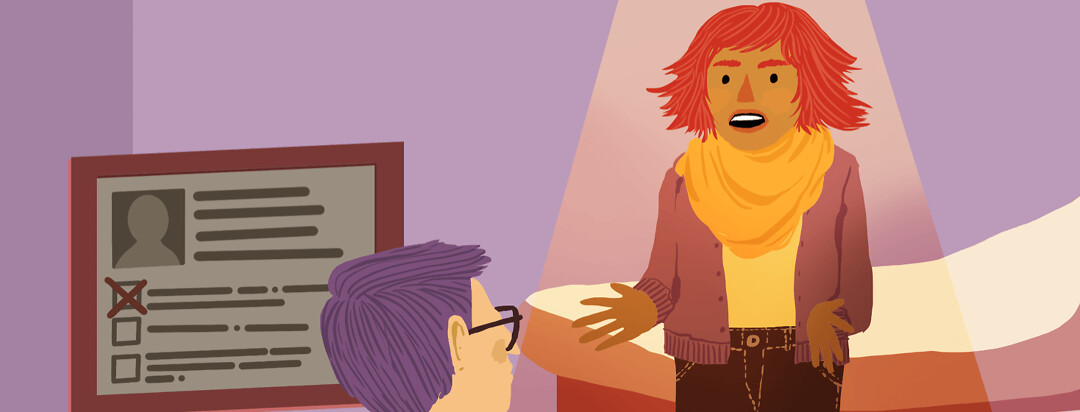When Should We Question Our Diagnosis?
Migraine disease encompasses a wide range of sub-types such as hemiplegic migraine, vestibular migraine, and so on. Other headache disorders fall outside this umbrella and often take a headache specialist with the experience to tell the difference. The trigeminal autonomic cephalalgias (TAC) — including cluster headache, paroxysmal hemicrania, SUNCT/SUNA, and hemicrania continua — can be mistaken for migraine disease. When you add on health disparities due to race, gender, or age, misdiagnoses become even more common.
"Women don't have cluster headaches"
I have always had a typical presentation of episodic cluster headaches. The first few years involved 2-week cycles every six months with 1-2 attacks each day before disappearing for months. While the first neurologist I saw did diagnose me with cluster headaches, I moved to a new state and had to find all new doctors, none of whom believed I had the condition because “women don’t have cluster headaches.” I heard this from doctors in every setting — ER, clinic, urgent care — so often that even I questioned whether it was cluster headaches or migraine disease.
The last straw
They threw pills, nasal sprays, and preventive drugs at me to treat my attacks, only for me to call a few days later, reporting no change or show up at their clinic when the next cycle started asking for an effective treatment. The final straw was when I had an attack at the clinic, and they forced me into a dark room. I begged them for a sumatriptan injection (something I knew worked and had at home), but they had none on site. Instead, they shot me up with a cocktail of pain killers and migraine medications. The cocktail did nothing, and I drove home with an attack, in tears, and vowed never to return.
It’s been 10 years, and I’m still angry at those doctors who refused to believe I have cluster headaches. High-flow oxygen and a nonrebreather mask would have done what hydrocodone, Toradol, and countless other treatments failed to do — end my pain.
Searching for better providers
I finally found a primary care physician who listened to me and did his research on cluster headaches. He was the first one in my 7 years with the condition to do so and prescribed me oxygen on the spot. I still had to fly from Colorado to Michigan to see a neurologist at the Michigan Headache and Neurologic Institute (MHNI) to get re-diagnosed with cluster headaches, but things got much easier after that.
I knew I didn’t have migraine disease, but what about those who don’t know they’re misdiagnosed? Anna Williams has recounted her story of fighting for the correct diagnosis, and she’s far from alone. Cluster headaches are seen as a predominately white, middle-aged man’s disease. The mindset is shifting, though. More and more people of different races and genders are getting the correct diagnosis without wading through years of misdiagnoses and insufficient treatments, but there’s a long way to go.
Advocating for yourself at appointments
A neurologist once told me that doctors should constantly question the diagnosis, and perhaps, we as patients should too. Cluster headaches can be confused with SUNCT/SUNA and vice versa. The TACs have been mistaken for migraine disease as well.
What if you have multiple headache disorders? I don’t only have episodic cluster headaches. I now have status migraine attacks linked to hormonal surges. People often have comorbid headache disorders that go unnoticed by their treating physician.
Questions for your next visit
Whether you’re unsure about your current diagnosis or think you’ve developed a second type of head pain, ask yourself and your doctor these questions during your next visit:
- Do my symptoms line up with the current diagnostic criteria for my diagnosed condition?
- Are the treatments for my diagnosis working to prevent or abort my attacks?
- Is there a way to confirm my diagnosis? (For example, nitroglycerin or histamine can trigger a cluster headache, and indomethacin is a wholly effective treatment for paroxysmal hemicrania)
- Could there be a second headache type affecting me?
There are so many types of head pain that it’s easy to be pigeon-holed into one condition based on your gender, race, age, or another factor. The symptoms and frequency of your attacks should be the focus when it comes to your diagnosis and treatment. As my favorite neurologist, Dr. Brian McGeeney, puts it, “If you wonder if your treatment is working, it isn’t.”

Join the conversation